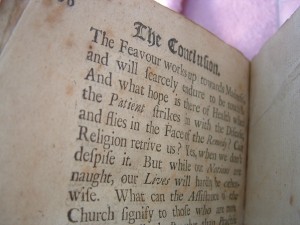
Lesson 14: Conclusion
In this first part of our class, we’ll discuss how to wrap up your thesis.
Objectives:
- To define what makes a good conclusion.
- To determine the proper way in which to conclude your thesis.
- To list the dos and donts when writing your thesis conclusion.
Quick Navigation through the Lesson 14:
 In this lesson, we’re going to discuss how to properly wrap up your thesis. What are the things which you should include when writing your thesis conclusion? How does this contribute to your thesis’s effectiveness? We’ll be answering all these questions as well as talking about the different ways in which you can write the conclusion so that you leave a lasting impression on your readers.
In this lesson, we’re going to discuss how to properly wrap up your thesis. What are the things which you should include when writing your thesis conclusion? How does this contribute to your thesis’s effectiveness? We’ll be answering all these questions as well as talking about the different ways in which you can write the conclusion so that you leave a lasting impression on your readers.
Don’t be repetitive.
The worst thing that you can do when writing this part of your thesis is to re-write everything that you discussed previously. This reduces your thesis paper’s impact, slows down the study’s momentum and tires out your reader, who has just spent a significant amount of time reading about these things in the previous parts of your paper.
In this section, you should talk about your paper as though you’re addressing someone who has read the study (which, in fact, you are). If you want to specify a point contained within the paper, either summarize your point or refer to the exact page or Table/Figure number.
Also, never use the word prove; even in the most extensive studies, one never claims to prove something because for something to be proven would mean that it had gone years of study and was, after decades of experimentation, proven incontestable—a law (e.g. the law of gravity, the laws of thermodynamics). For our studies, we use words like suggests or implies.
[WpProQuiz 177]
Below is an example to help better illustrate this point:
Correct:
In general, we can conclude that extraversion is definitely affected by attractiveness. By looking at the results of a multiple regression as indicated in Table 1.3, we were able to eliminate extraneous variables like height and skin color, suggesting that our hypothesis was correct.
*notice that the sentences are concise, with minimum repetitions—we also cite the table number instead of repeating the information it contains
Incorrect:
Our study was able to prove that extraversion is affected directly attractiveness. We used a multiple regression to eliminate extraneous variables like height and skin color, thus isolating attractiveness. We were able to get a p value of +0.4 whereas for the other variables, we got results of +0.3 and lower—this proves that indeed, extraversion is affected directly by attractiveness. This agrees with our hypothesis that attractiveness directly affects extraversion.
*notice that the sentences are repetitive and that they state statistics already contained in the tables; they also misappropriate the word prove
Highlight important points.
While we want our conclusion to be short but sweet, we definitely also need it to be informative. The things you mention in this last part determine whether or not your study is remembered. Make sure to include a lot of action words and to use the active voice as much as you can help it. This makes your last few sentences catchy and hard to forget.
For example:
Correct:
In conclusion, we can say that it’s difficult for pretty people to stay unemployed. Attractive people are more likely to get good jobs and to succeed in their respective fields.
*notice that the sentences are kept short and are written in the active voice—it also mentions the key findings of the paper right away
Incorrect:
In conclusion, we can say employment, education and the ability to succeed in one’s respective fields are things which often come to attractive people.
*notice that the sentence is long and convoluted and that it’s written in the passive voice—it also doesn’t mention the study’s key findings until the last part of the sentence
[WpProQuiz 178]
In this lesson we were able to learn that writing conclusions are important because they allow us to tie all the different parts of our thesis together. They’re also the last part which our readers encounter with regard to our study so they should be written in a way that’s short but memorable.
Next up, we’ll be talking about how to write our recommendations. We’ll discuss what needs to be included in this section of our paper and why it’s important.
 + 1-888-827-0150
+ 1-888-827-0150 + 44-20-3006-2750
+ 44-20-3006-2750










